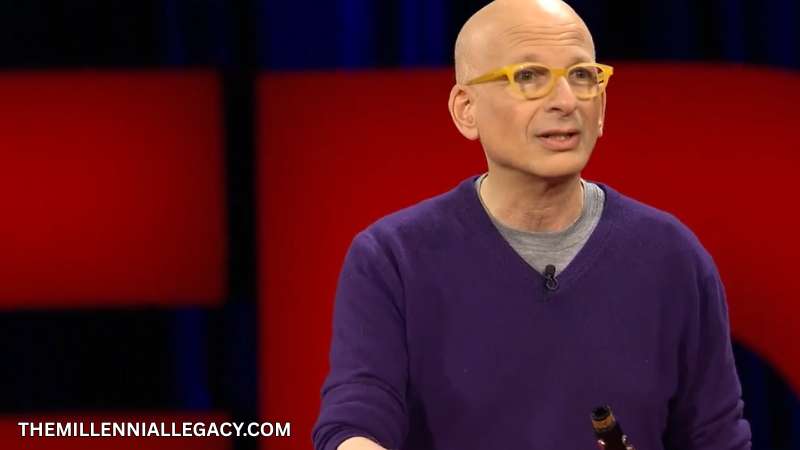Instagram might be known for sunsets, selfies, and brunch—but in 2025, it’s also a go-to destination for personal finance and investing advice. As the space evolves alongside YouTube financial influencers and TikTok financial influencers, Instagram has carved out a niche of its own. For the young, especially Millennials and Gen Z trying to make sense of budgeting, investing, and debt, Instagram offers something unique: fast, visual, and emotionally resonant content from creators who get it.
While TikTok is built for speed and YouTube for depth, Instagram sits somewhere in between. Through Reels, carousels, stories, and infographics, creators are turning money talk into everyday scrollable wisdom—covering everything from how much money to save to understanding the differences between trading vs. investing. The best financial influencers on the platform blend aesthetic appeal with grounded advice—making personal finance both accessible and aspirational.
Most of these finfluencers are Millennials, now in their 30s and early 40s—old enough to have wrestled with student loans and housing costs, but still young enough to speak fluently in meme captions and swipe-up culture. And they’re building audiences of younger followers—especially Gen Z, now between the ages of 13 and 28, who appreciate financial advice that’s quick, clear, and fits in between posts about fashion and food. This is a generation raised amid the gig economy and heavily influenced by the social media impact on investment decision making.
From financial therapists to budgeting experts to first-gen wealth coaches, these are the top financial influencers making money advice viral on Instagram in 2025—offering not only practical tips but also mindset shifts that shape how followers build their investment portfolio.
1. Delyanne Barros (@delyannethemoneycoach) – 265K Followers (age 40)

A former attorney turne d financial educator, Delyanne uses her platform to teach investing with confidence—particularly to first-generation wealth builders. Her Instagram is packed with easy-to-understand breakdowns of Roth IRAs, compound interest, and market psychology. Her most-viewed Reel, “Start Investing with Just $5,” has crossed the 1M view mark, and her advice often reflects lessons learned from leaving law to take control of her own financial future., Delyanne focuses on helping first-gen Americans build wealth. Her infographics on Roth IRAs and investing basics go viral for a reason: they’re sharp, simple, and empowering.
2. Tiffany Aliche (@thebudgetnista) – 520K Followers (age 45)
Known as ‘The Budgetnista,’ Tiffany has spent over a decade teaching women how to budget, save, and transform their financial lives. Her Live Richer Challenge inspired a movement, and her content often ties personal finance to larger life goals. Her most-saved carousel post, “10 Steps to Financial Wholeness,” has helped thousands organize their money and build lasting wealth., Tiffany continues to use her platform to teach financial wholeness and budgeting literacy—especially for Black women. Her “Live Richer” carousels break down complex ideas into colorful, swipeable steps.
3. Berna Anat (@heyberna) – 140K Followers (age 35)
Berna calls herself your ‘financial hype woman’—and lives up to it with high-energy videos, vulnerable storytelling, and humor-infused financial education. She’s especially popular among Gen Z for tackling emotional spending and money shame. Her Reel “Money Mindset Shifts You Need Today” went viral with over 500K views for its balance of tough love and motivation., Berna uses humor, real talk, and high-impact visuals to tackle money shame, budgeting, and the emotional side of finance. Her style is loud, proud, and perfect for Gen Z and younger Millennials.
4. Kia Commodore (@pennies.to.pounds) – 110K Followers (age 29)
Based in the UK, Kia makes finance approachable for a younger, often underrepresented audience. She posts frequent Q&A Reels about saving goals, credit building, and navigating the job market in the gig economy. Her post explaining the 2025 UK budget garnered over 750K views, cementing her role as a trusted financial voice for Gen Z and young Millennials., Kia focuses on helping young people of color take control of their finances. Her Instagram is packed with Q&A Reels, motivational captions, and no-fluff advice on saving, investing, and financial confidence.
5. Justine Nelson (@debtfree.millennials) – 130K Followers (age 34)
After paying off $35,000 in student loans on a $37K salary, Justine began teaching others how to live frugally without feeling deprived. Her Instagram shares zero-fluff advice on side hustles, budgeting for couples, and how much money to save every month. Her Reel “How I Paid Off $35K in 2 Years” has inspired over 600K views—and counting. of paying off $35K in student debt on a modest income—and now helps others do the same. Her feed is a mix of budgeting Reels, debt-free tips, and relatable “real life” money wins.
6. Tori Dunlap (@herfirst100k) – 660K Followers (age 30)
Tori made headlines after saving her first $100,000 by age 25, and she’s been turning personal wins into collective power ever since. She’s a thought leader in financial feminism, regularly breaking down systemic money issues alongside practical tips. Her most-viewed Instagram Reel, “Save $100K: Here’s How,” has racked up over 1.5M views and counting. and bestselling author, Tori’s content is bold, mission-driven, and unapologetically pro-women. She uses Reels and stories to push financial independence as a form of protest—and it resonates.
7. Paco de Leon (@thehellyeahgroup) – 60K Followers (age 38)
Paco brings an artistic twist to financial advice, using hand-drawn graphics and quirky illustrations to simplify topics like taxes, business budgeting, and investing for creatives. Their post “Freelancer Tax Survival Guide” remains one of the most-saved among self-employed followers looking for structure in their financial chaos., Paco fuses creativity and finance in a way no one else does. Her illustrations and doodles make taxes, business finance, and money boundaries feel both light and profound.
8. Anjie and RJ (@richbyintention) – 85K Followers (ages 36 & 37)
This couple documents their journey to financial freedom, focusing on teamwork, faith, and family. Their transparency around paying off over $100K in debt has attracted a loyal following. Their Reel “How We Paid Off $123K in Debt Together” went viral with over 900K views, offering an authentic alternative to flashy finance content. shares advice on marriage, money, and generational wealth—especially for Black and brown families. Their content is honest, uplifting, and always partnership-centered.
9. Shang Saavedra (@save.my.cents) – 150K Followers (age 42)
Shang promotes slow, steady wealth-building and believes that mindset is the secret to long-term success. A FIRE advocate, she paid off her NYC mortgage before turning 40 and now focuses on minimalism, mental health, and generational wealth. Her post “The $5 Daily Habit That Changed My Financial Life” has over 700K views. (Financial Independence, Retire Early) advocate who paid off her mortgage before 40. Her Instagram is packed with practical money-saving hacks and mindset shifts for long-term wealth.
10. Bola Sokunbi (@clevergirlfinance) – 480K Followers (age 40)
Bola’s platform focuses on helping women—especially women of color—gain confidence with money through structured plans and community-based support. Her posts include everything from investment portfolio tips to tackling credit card debt. Her top-performing Reel, “Building Wealth from Scratch,” has passed 1.2M views. and motivating messages, Bola empowers women—especially women of color—to take control of their financial lives. Her platform mixes education with empowerment, always in a visually clean, uplifting style.
Why Instagram Still Matters
In a digital world overloaded with noise, Instagram thrives on clarity and emotion. Its best finfluencers don’t just share advice—they tell stories, share mistakes, and build connection. It’s not about perfection; it’s about progress, and these creators are making personal finance feel like a community.
Whether it’s a money meme that makes you think or a budgeting tip you save for later, Instagram continues to prove that even a single post can spark a financial breakthrough.





